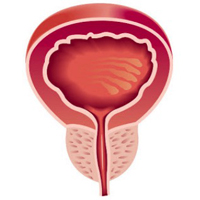Free prostate-specific antigen outperforms total prostate-specific antigen as a predictor of prostate volume in patients without prostate cancer

Published: April 6, 2020
Abstract Views: 1293
PDF: 1151
Publisher's note
All claims expressed in this article are solely those of the authors and do not necessarily represent those of their affiliated organizations, or those of the publisher, the editors and the reviewers. Any product that may be evaluated in this article or claim that may be made by its manufacturer is not guaranteed or endorsed by the publisher.
All claims expressed in this article are solely those of the authors and do not necessarily represent those of their affiliated organizations, or those of the publisher, the editors and the reviewers. Any product that may be evaluated in this article or claim that may be made by its manufacturer is not guaranteed or endorsed by the publisher.

 https://doi.org/10.4081/aiua.2020.1.1
https://doi.org/10.4081/aiua.2020.1.1




